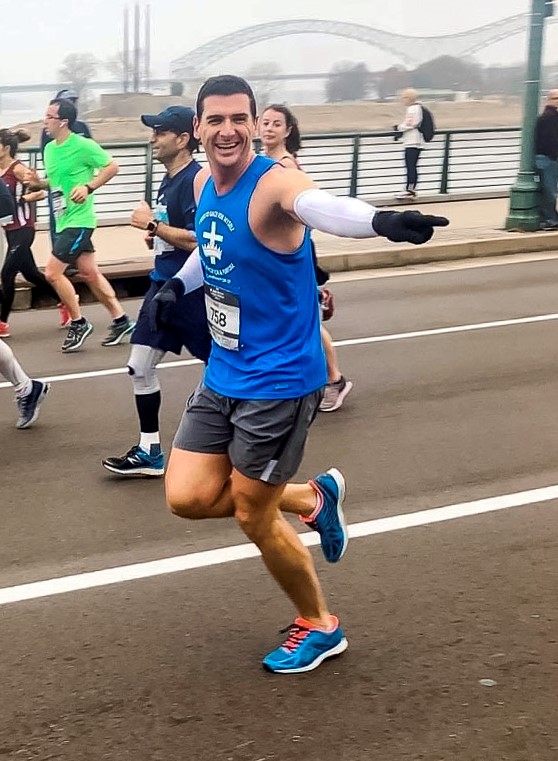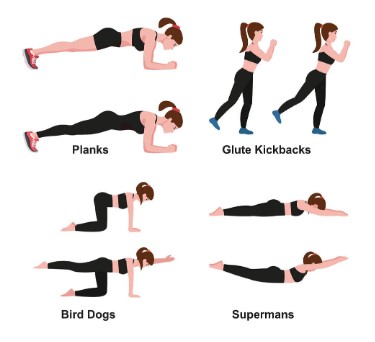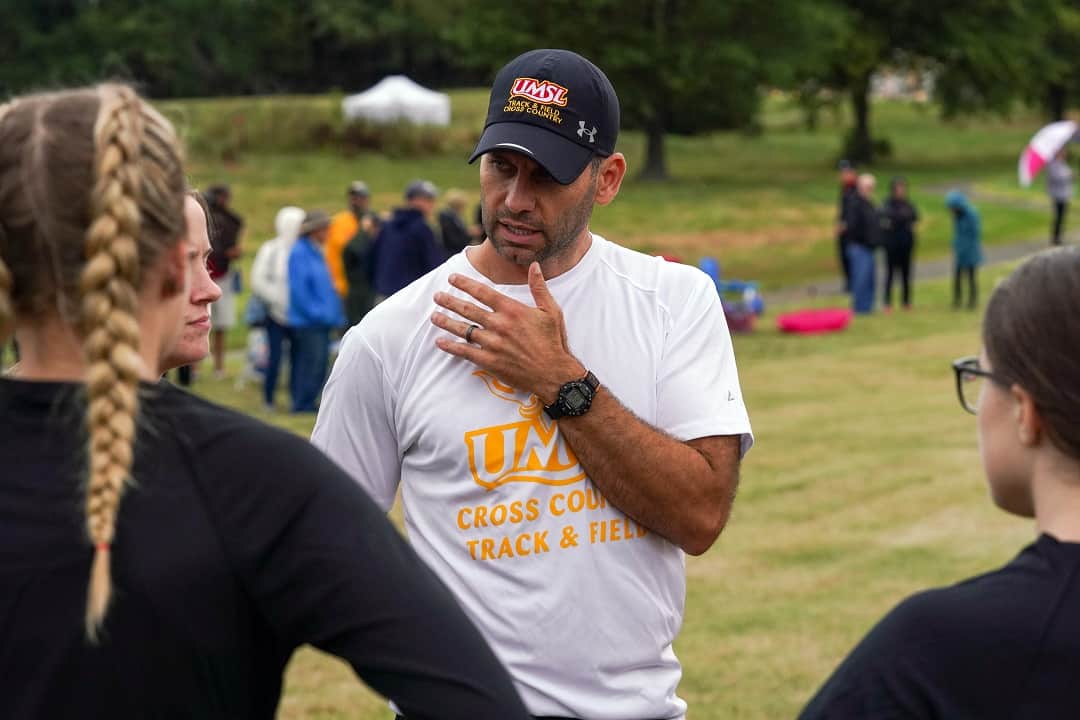For runners who want to improve performance and reduce injuries, there’s no such thing as crunch time. Ask Rich Skirball, who prided himself on ab training as a high school distance runner.
“We all wanted a six pack,” said Skirball, who earned All-State honors at Granite City High School in 2000.
He didn’t realize until college, when he advanced to the NCAA 800-meter championships running at Southern Illinois University Edwardsville, that he was fighting a losing battle, that “every muscle on the body has its counterpart, and you have to develop that.”
Skirball incorporated lessons about core strength for his protégés as track and cross-country coach at Granite City from 2012 to 2022. But the lessons are just as important to runners of all ages and abilities.
So, to school recreational runners on the benefits of core training, we decided to pick the brains of Skirball and some of his college counterparts.

Granite City teacher, coach, and runner Rich Skirball.
Core Versus Abs
At the end of a long run or race, fatigue causes form breaks, which decrease performance and increase the chance of injury. Core strength helps you maintain good posture and reduce the pain that results from poor posture over a long distance.
Skirball and UMSL track and cross-country coach Steve Picucci avoid using the term “abs,” but old notions die hard. Picucci says most of UMSL’s distance runners arrive with the notion that a few ab exercises will suffice.
“People have to realize that focusing on abs is pointless and, in fact, detrimental,” Picucci said.
The core consists of 29 muscle groups, including:
- Obliques, which extend diagonally from the ribs and aid in rotating the trunk,
- Pelvic floor muscles, which help stabilize hips,
- Back muscles, which support erect posture,
- Glutes, hamstrings, quads, and the diaphragm.
“Think of your core as an aluminum can,” Picucci said. “If you’re doing crunches and sit-ups, the front of your midsection is stronger, but you’re making your back weaker in relation to it. When you get tired, your body collapses toward the back. You break down because you can’t stay in the right position.”
Being Consistent
Picucci emphasizes core strength to improve his runners’ efficiency and power, as well as to prevent injuries, and works hand-in-hand with Jeromey Johnson, UMSL’s director of sports performance, who emphasizes consistency in core training to break the injury cycle.
“If you can get a 12- to 16-week training cycle without injuries, think of the progress you can make and the measurables you might not otherwise hit,” Johnson said.
The coaches recommend incorporating core exercises four days a week, which can be difficult for both students and recreational runners.
“What I run into with athletes across the board is that they have a full-time commitment to school plus maybe a part-time job, where older runners balance training with jobs and family. They feel so many stressors, and they rush from one commitment to the other, rather than stay focused and in the moment,” Johnson said.
He recommends incorporating core movements either early or in the middle of a workout, rather than waiting until the end, when you’re already thinking about where you have to be next.
Do as I Say, Not…
Now a PE teacher in the Granite City district, Skirball admits to needing reminders about the importance of core strength. When training for the 2014 Chicago Marathon, “I’d get to mile 18 and my body was breaking down. My knees were swelling. I couldn’t get knee drive, and my calves were on fire doing from taking on the extra load.”
His instinct was to focus on strengthening knees and calves, which didn’t work. “I wanted to focus on the problem, around my knees, when it was really the hip flexors driving it,” he said.
For Skirball’s next marathon, Granite City athletic trainer Tate Merten suggested more core training. On a more challenging course, Skirball’s time was slower, “but my body was stronger, and my recovery was vastly improved. I was running two days after my marathon, whereas in the past, I dealt with micro tears and soreness for an entire week post-marathon.”
Consensus recommendations to build core strength include the following:

Planks: Johnson suggests incorporating breathing. Rather than holding a plank for 30 seconds, focus on three to six breaths.
Glute kickbacks: Either standing or on knees and elbows.
Bird dogs: In a four-point kneeling position, extend one leg and the opposite arm, balancing on the others. Bring your arm and leg to meet between your abs and the floor. Repeat with the opposing arm and leg and alternate for five to 10 reps.
Supermans: Lying on your stomach, raise your arms and legs as you arch your back. Hold for a couple seconds. Repeat five to 10 times.
Johnson and Picucci also urge runners to honor their training schedule. If it says “Rest” or “Crosstrain,” resist the urge to do an easy or slow run.
“You’re not breaking down because you’re not fit enough,” Picucci said. “You’re breaking down because your body can’t stay in the right position.”
Skirball, 40, concurs with a testimonial: “It’s cool for me that I’m still running and to see how much has evolved from the late ’90s until now, from doing crunches for a six pack to having meaningful exercises that help me stay pain-free and maintain a healthy lifestyle.”
Author: Kathleen Nelson is a regular contributor to Terrain Magazine.
Top Image: UMSL track and cross-country coach Steve Picucci.


Leave A Comment